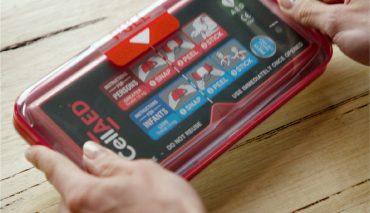Before I started Rapid Response Revival, I had a skydiving business.
In the eight years I devoted to starting, building and eventually selling that business, tens of thousands of people jumped out of perfectly good aeroplanes with me and my fellow skydivers.
One thing this experience taught me was a healthy appreciation for knowing, and managing, risk.
Throwing myself out of a plane was one thing. Having responsibility over someone else’s life in a tandem skydive – that’s something else.
Over time, I developed a mantra for my crew to help them manage the risks to themselves, and the people who literally put their lives into our hands every day:
“Manage the knowns, or the unknowns will own you.”
The idea of “known knowns” copped a lot of flak after then-US Secretary of Defence, Donald Rumsfeld’s now-famous speech on WMDs in Iraq in 2002. This gets in the way of just how important known knowns are when it comes to risk mitigation.
When things start going wrong, you get chaos. When that happens, the unknowns get you.
We face this challenge every day. You wake up tired – that’s variable number one. You get in the car to drive to work, and it’s raining – that’s variable number two. You forget to switch on the headlights because you’re tired – there’s variable number three.
With each successive variable, your ability to react in the face of chaos is exponentially reduced.
Say another car oversteers toward you. If you have your eye on the ball, you’d easily manoeuvre to avoid it. But you take your eye off the ball and don’t look after the known sources of risk – driving tired, turning on your headlights in wet weather – the unknowns get you.
We knew when skydiving that being too blasé, too comfortable, leads to too many things going wrong. In that scenario, any one variable could kill people.
The same is true when it comes to mastering known risks of sudden cardiac arrest.
Globally, it’s estimated that less than one per cent of people survive sudden cardiac arrest.
The window of opportunity to help someone experiencing an out-of-hospital cardiac arrest is minutes at best. In the time it usually takes for emergency services to arrive, that window quickly closes without someone stepping in to perform early CPR and defibrillation.
In this case, the knowns are clear. Early CPR and defibrillation save lives. And the willingness of bystanders to perform CPR and defibrillation significantly increases chances of surviving out-of-hospital cardiac arrest.
Monash University’s Brian Haskins shared with us last month just how effective bystander CPR and defibrillation – the knowns – are in dealing with the chaos of an out-of-hospital cardiac arrest.
The estimated annual death toll of six million people shows the destructive power of out-of-hospital cardiac arrest.
Teaching more people how to perform CPR, and improving access to lifesaving technology such as public access defibrillators, are vital to us mastering known risks of sudden cardiac arrest.
This article first appeared on Donovan Casey’s LinkedIn page. Follow him here.



